05 Kinematics in One Dimension
Kinematics in One Dimension
Kinematics is the branch of physics that describes the motion of objects without considering the forces that cause the motion. In one-dimensional motion, we focus on three fundamental concepts: displacement, velocity, and acceleration. Understanding these concepts is essential for marine biology students as they provide a framework for analyzing the movement of marine organisms in their aquatic environments.
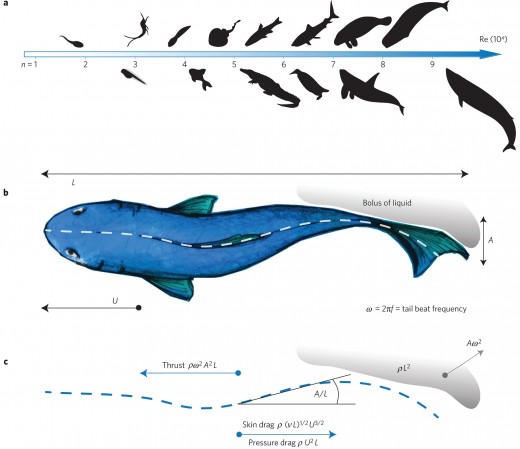 |
| The study of how fish use their fins and body to propel themselves through water involves analyzing the forces generated by muscle contractions and the resulting motion. |
Displacement, Velocity, and Acceleration
Displacement (x) refers to the change in position of an object. Unlike distance, which is a scalar quantity, displacement is a vector quantity, meaning it has both magnitude and direction. For example, if a fish swims from one point to another in a straight line, its displacement is the straight-line distance between the two points, along with the direction of that line.
Velocity (v) is defined as the rate of change of displacement with respect to time. Like displacement, velocity is also a vector quantity, which means it includes both speed and direction. When an object moves at a constant speed in a straight line, it is said to be in uniform motion, implying that its velocity remains constant. Average velocity can be calculated using the formula:
v¯ = Δx /Δt
where Δx is the change in displacement, and Δt is the change in time. In contrast, instantaneous velocity refers to the velocity of an object at a specific moment in time, which can be determined using the slope of a displacement-time graph.
Acceleration (a) is the rate of change of velocity with respect to time. It can be positive (speeding up), negative (slowing down), or zero (constant velocity). Non-uniform motion involves changing acceleration, which is common in the dynamic environments of marine ecosystems. Average acceleration can be expressed as:
a¯ = Δv /Δt
where Δv is the change in velocity over the time interval Δt. Instantaneous acceleration is the acceleration at a specific instant, similar to how instantaneous velocity is defined.
Problem Set: Average Velocity and Average Acceleration
Answer the following problems by listing the given/known values, identifying the unknown quantity, and showing your complete solution.
- A whale migrates along a straight path in the ocean. It covers a distance of 180 km in the first 6hours, then changes direction and covers another 80 km in the opposite direction in 4 hours. What is the average velocity of the whale during the entire trip?
- A seal dives from the surface of the water at a speed of 3 m/s. It accelerates uniformly to reach a speed of 8 m/s in 3 seconds as it descends. What is the average acceleration of the seal during this dive?
Equations of Motion
For uniformly accelerated motion, several key equations, known as the equations of motion, can be employed to analyze and predict the behavior of moving objects. These equations assume that the acceleration is constant, which is often a reasonable approximation in many biological scenarios, such as a fish accelerating to catch prey.
1. The first equation relates final velocity (v), initial velocity (v0), acceleration (a), and time (t):
v = v0 + at
2. The second equation describes the relationship between displacement (x), initial displacement (x0), initial velocity (v0), time (t), and acceleration (a):
x = x0 + v0 t + 1/2 a t2
3. The third equation connects the final velocity (v), initial velocity (v0), acceleration (a), and displacement (x - x0):
v2 = v02 + 2a (x - x0)
4. The fourth equation calculates displacement based on the average of the initial and final velocities:
x = x0 + 1/2 (v + v0)t
These equations are invaluable tools for marine biology students, enabling them to solve problems involving the motion of marine organisms, such as the swimming patterns of fish or the movement of marine mammals. By applying these kinematic principles, students can gain a deeper understanding of how physical laws govern the behavior of life in the ocean, enriching their studies in marine biology.
Problem Set: Average Velocity and Average Acceleration
Answer the following problems by listing the given/known values, identifying the unknown quantity, and showing your complete solution.
- A squid accelerates from rest to a speed of 10 m/s in 2 seconds by expelling water from its body in a jet. Assume the squid’s acceleration is uniform. (a) What is the acceleration of the squid? (b) How far does the squid travel during this time?
- A sea turtle is rising vertically toward the ocean surface. It starts from rest and ascends with a constant acceleration of 0.2 m/s². How long will it take for the turtle to reach the surface if it starts 5 meters below the surface?

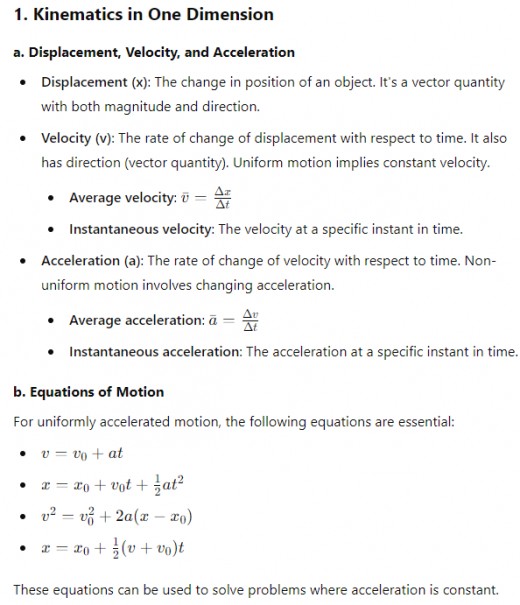
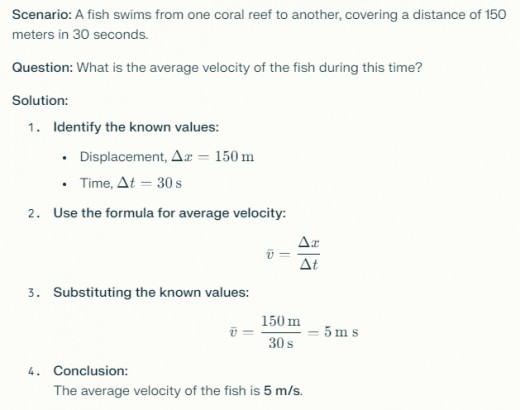
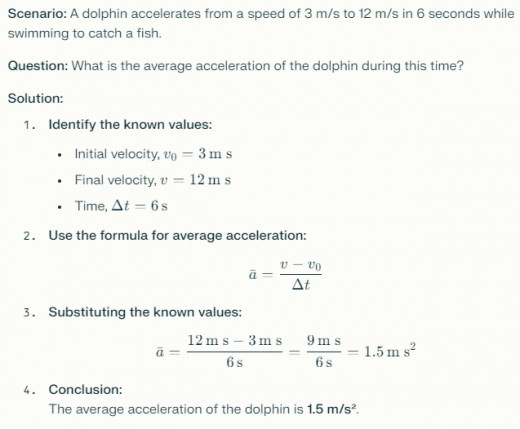
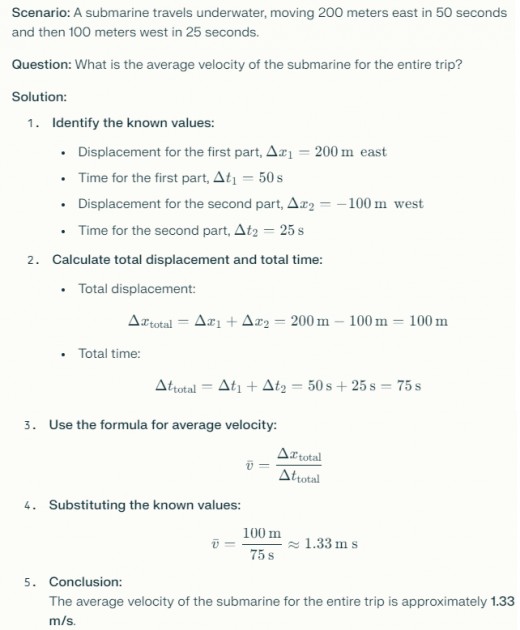
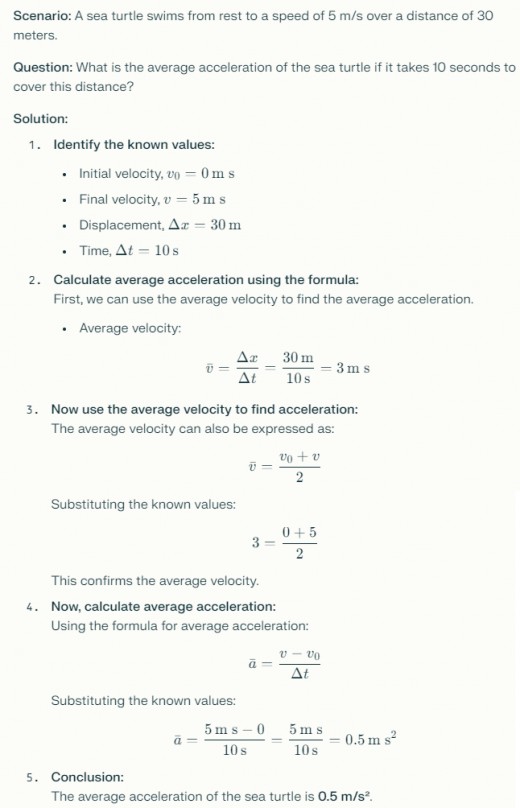
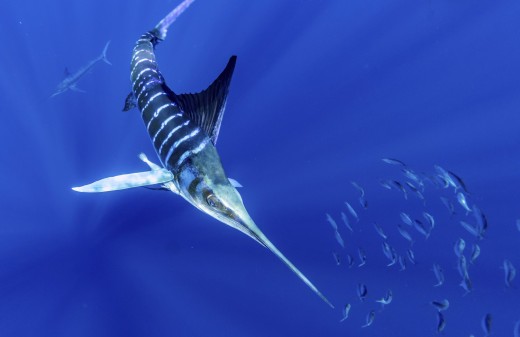
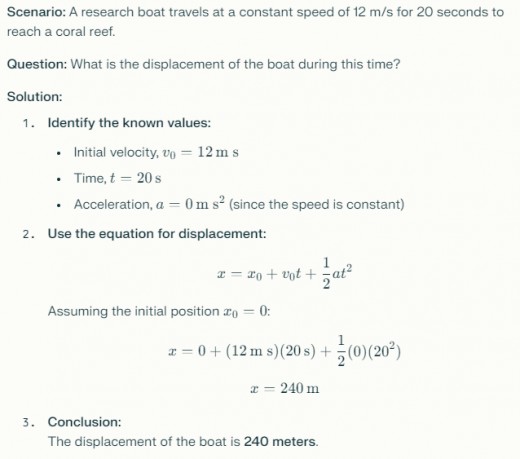
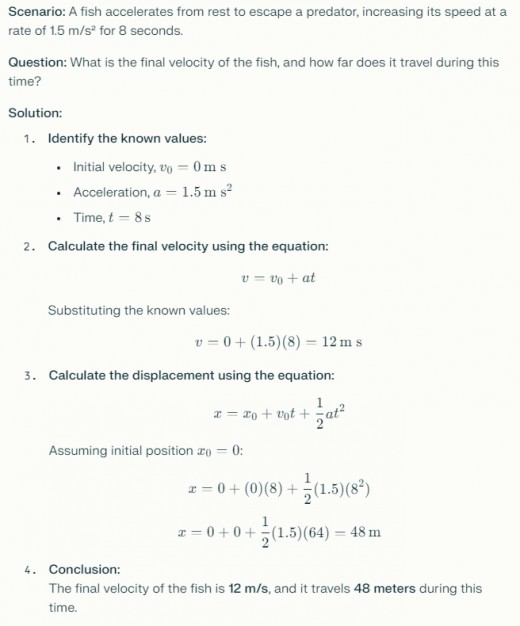
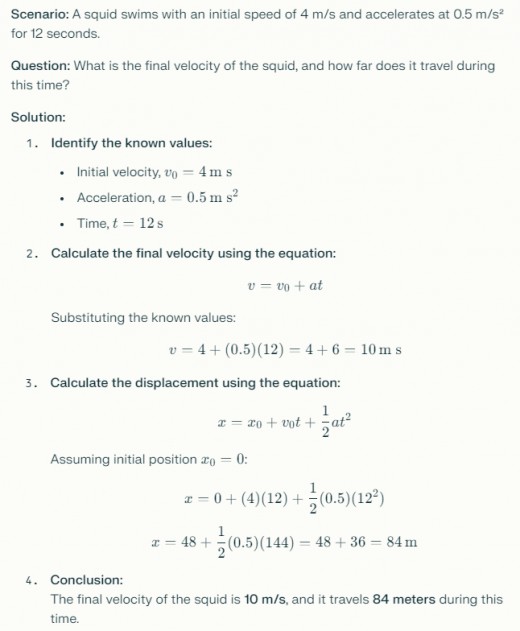
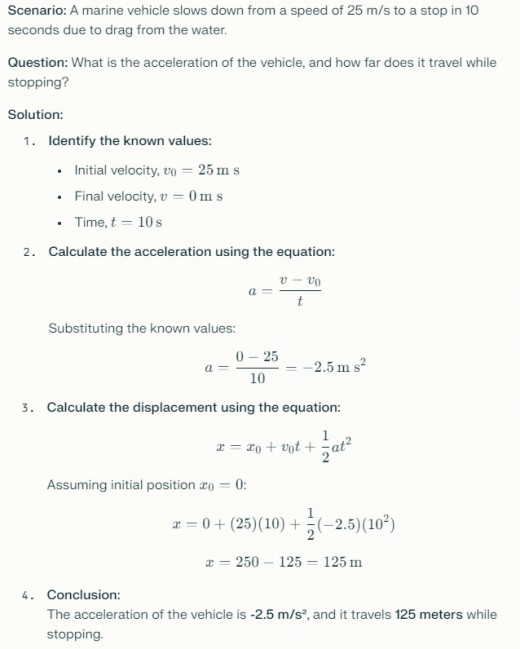
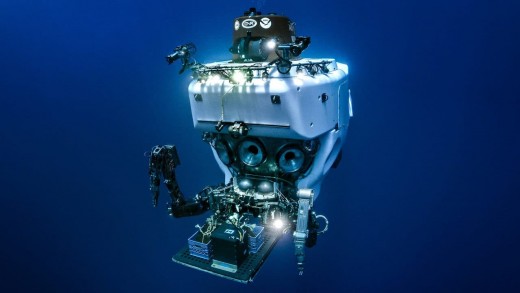
.png)
.png)
.png)
Comments
Post a Comment